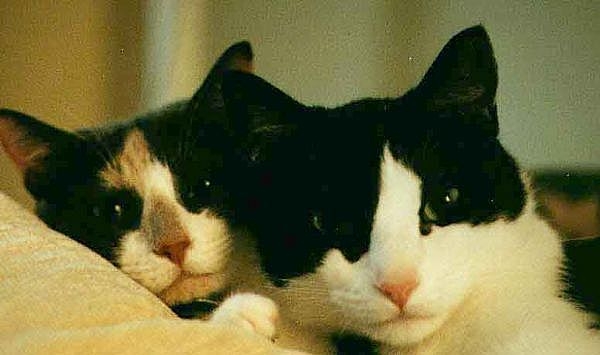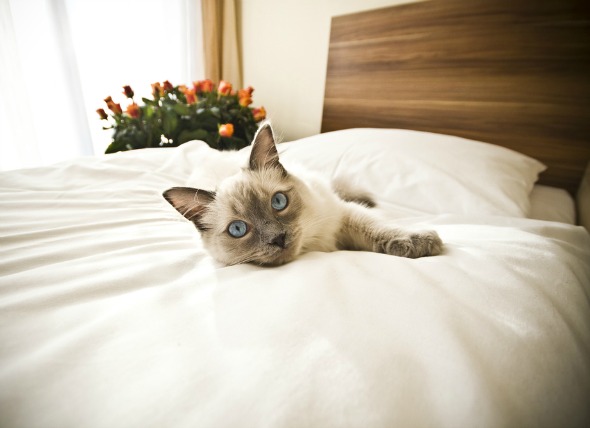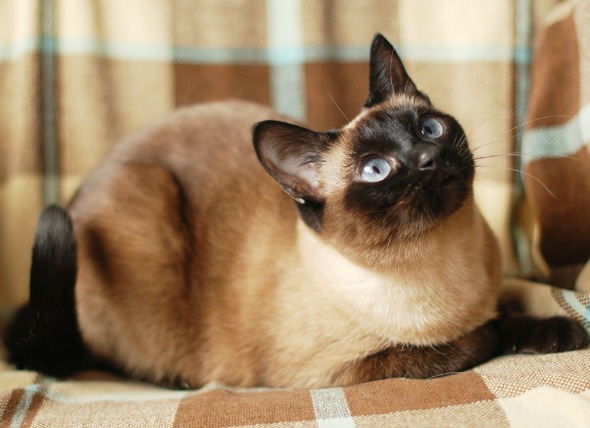
Usually, a cat owner can make out what their pet is trying to tell them. It doesn't mean they have learnt the language of cats and comprehend what meow, mew or marrowy means. They just make out the body language of their pet.
A significant aspect of owners' relationship with cat is acquaintance with their pet. On making very frequent contacts with the cat, both, the owner and the pet discover different facets of behavior of each other. For instance, when you decide to relax reading your preferred book, your cat can assess what it should do then. It would sit above your book and init on getting petted.
Apparent cues
The cat learns where various items are located at home through routine and repetition. That's how it signals you whenever it needs any of those items. If you regularly store your cat's food in a particular cupboard, she becomes aware of that and accesses that cupboard on feeling hungry but depends on you for opening its door and offering food in a bowl. This is how a dependable blueprint of body language gets developed.
It is quite likely for the cat to meow while sitting next to the cupboard. It might also stroke your leg if you are standing next to its point of food and it may intensify it meow.
A cat also give you a signal when want to go outdoor or come indoor. It is likely to approach you and go back to the entrance that you generally use. Or it may just sit there and ogle at the entrance in anticipation of getting the gate opened magically, allowing it to go outdoors and enjoy some freedom. It is not unusual for some cats to even stand on their rear legs and try opening the door by rotating its knob with their paws in an effort to open the door on their own.
Subtle signs
Understanding body language of your cat can be difficult but there are signs to help you realize what it is trying to convey. The mot important sign is a departure from routine.
For instance, you may always find your cat at one particular end of the bed as the clock sounds the alarm in mornings, but morning you may not find it at its regular spot. On searching for it, you find it underneath the coffee table or bed. You find it strange but don't really bother about it. Later, it dawns upon you that it's not the usual habit of your cat.
Routine of a cat is very significant. Some of the normal routines may include such activities as traveling from one corner of your work table to her bowl, jumping to her pet windowsill and watch moving traffic. If you find your cat doing something that is not normal, it is the initial indication that something has gone wrong, a slight clue that a number of pet owners fail to notice initially.
A strong relationship is the key
You need to observe body language of your cat for a long time. Nobody knows your cat better than you. None can make out what it wants. Only you can find out what it requires on observing the signals it sends out.
 Regurgitation in Cats
When a cat's stomach contents (i.e., food) mo
Regurgitation in Cats
When a cat's stomach contents (i.e., food) mo
 How to Introduce Two Cats
How to Introduce Two Cats
How to Intro
How to Introduce Two Cats
How to Introduce Two Cats
How to Intro
 How to Keep Cats Out Of A Garden
How to Keep Cats Out Of A Garden
How t
How to Keep Cats Out Of A Garden
How to Keep Cats Out Of A Garden
How t
 Skin Blisters (Vesiculopustular Dermatoses) in Cats
Vesiculopustular Dermatoses in Cats
A pustule is
Skin Blisters (Vesiculopustular Dermatoses) in Cats
Vesiculopustular Dermatoses in Cats
A pustule is
 Mast Cell Tumor (Mastocytoma) in Cats
Connective Tissue Tumors in Cats
Mast cell tumors
Mast Cell Tumor (Mastocytoma) in Cats
Connective Tissue Tumors in Cats
Mast cell tumors
Copyright © 2005-2016 Pet Information All Rights Reserved
Contact us: www162date@outlook.com